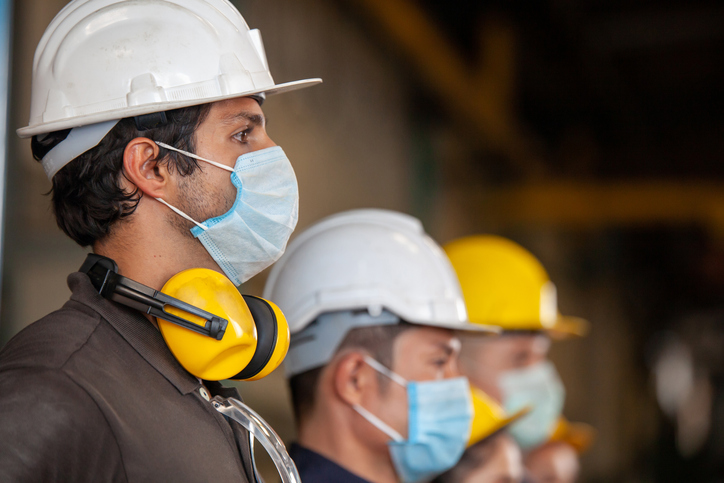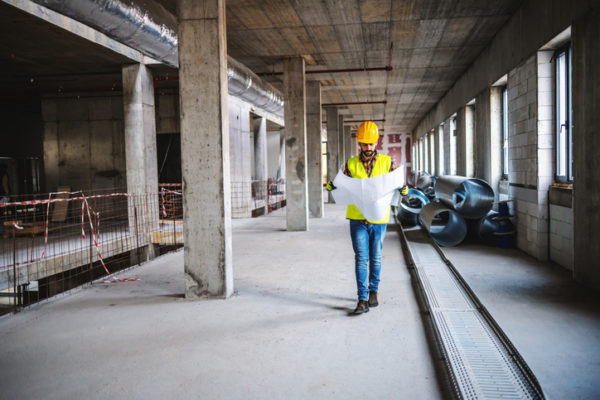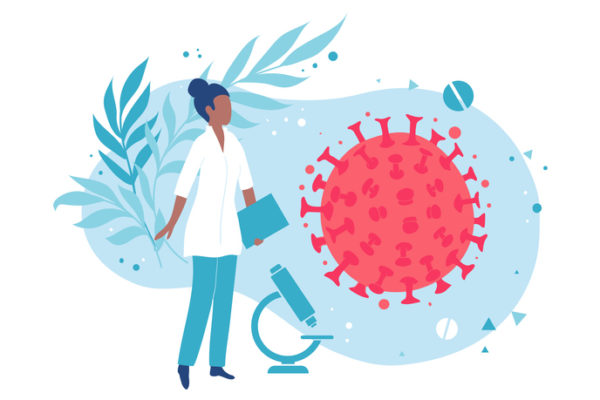The coronavirus pandemic has sent shock waves through the United States, shutting many industries down and changing the face of others. The construction industry has remained relatively resilient so far, thanks to its designation in many areas as an “essential service.”
But the designation as an essential service, and the ability to continue operating despite the pandemic, means that contractors now have a substantial burden to protect workers from the risk of infection with the coronavirus disease (properly called COVID-19).
Fortunately, OSHA and the Centers for Disease Control (CDC) have issued general recommendations for essential workers, work sites, and the general public, which can be effectively applied on the job site. Unfortunately, their application may not be intuitive and will require changing some of the ways you work.
Here are some things you need to know to keep your job sites safe.
A Coronavirus Outbreak on Your Job Site Could Be Catastrophic
One of the things that makes the novel coronavirus so dangerous is that it is highly communicable. In any environment where people live, work, or play in close proximity, a single case can lead to an outbreak that impacts everyone in the community.
An outbreak on a job site, for instance, has the potential to be catastrophic. A single uncontained case on your site could lead to dozens or hundreds of cases. This would, in turn, lead to labor shortages, work delays, potential lawsuits and civil claims, not to mention the human cost of illness and potential deaths among your workers.
For all of these reasons, contractors cannot afford to wait to implement measures to keep their construction workers safe.
Know Your CDC and OSHA Best Recommendations
Almost everyone by now has heard the recommendations from the CDC and OSHA on best practices for staying safe from coronavirus. These essential best practices are:
- Frequent hand-washing
- Social distancing
- Sanitizing equipment
- Cloth face coverings
- Staying home when sick
- Staying home when a family member is sick
These practices, though simple in concept, present unique challenges on the job site. Below are recommendations for applying each on the job site. Keep in mind that these recommendations change as more is learned about the coronavirus, so it’s essential to keep checking back with the CDC and OSHA for the latest updates.
Frequent Hand-Washing
Many job sites traditionally provide limited facilities for personal hygiene. It’s imperative now for all job sites to provide ample hand-washing stations, with running water, soap, and paper towels. Be aware that frequent hand-washing will naturally impact productivity as workers spend more time on this activity, and be prepared to account for this in staffing and timelines.
You should also provide workers with hand sanitizer at multiple locations, so that they can quickly sanitize when moving between tasks or switching equipment.
Social Distancing
Construction work often requires individuals to work in close proximity to each other, often within enclosed spaces. As much as possible, schedule work so that fewer people must work in the same space at the same time. Encourage employees at all levels to avoid hand shakes and to stand at a distance of at least six feet apart, as much as possible. Provide ample space for breaks so that workers can stay apart from each other while eating and resting.
Sanitizing Equipment
The retail and grocery industry has been encouraged and, in many areas, required by law to thoroughly sanitize work spaces and equipment on a daily basis. Construction employers likewise should begin immediately to implement sanitizing protocols for all equipment. Tools and equipment should be sanitized any time an item is transferred between users, as well as at the end of each work day.
Critically, make sure that porta-johns are being sanitized at least daily, if not more often.
Cloth Face Coverings
After initial hesitation, the CDC now recommends that the general public wear cloth face masks when out of their homes. This recommendation is based on the fact that infection with coronavirus can be asymptomatic but contagious for up to 12 days before symptoms appear, while some carriers never display symptoms at all, but are nevertheless contagious. A covering over the nose and mouth can prevent moisture droplets from spreading the virus to others, and is primarily for the protection of others, rather than for the protection of the wearer.
Encourage or require all employees to wear a simple cloth covering over their face while on the job site. This can be as simple as a kerchief, or a sewn cloth mask with elastic to hold it in place.
Avoid forcing employees to share PPE. Instead, make sure everyone has ample designated equipment that is theirs and that they can keep separate from others.
Stay at Home When Sick or a Household Member is Sick
Encourage all workers to stay home not only if they themselves have symptoms, but also if anyone in their family is displaying symptoms. Provide information to all workers, in their native languages, indicating the symptoms to look for:
- Fever
- Dry cough
- Fatigue
- Difficulty breathing
Staying at home can be difficult to enforce when workers have a financial incentive to continue to work. It may be helpful to provide employees with a more generous sick leave policy to ensure they stay home any time someone in their household displays symptoms.
Additionally, though not officially suggested by the CDC, some employers have instituted temperature checks at the start of each shift, to help enforce this rule.
Training
Make sure all employees and subcontractors on your job site receive training in the new safety protocols. In addition to the measures above, each employee should:
- Avoid touching their faces
- Cough/sneeze into an arm
- Wear fresh clothes every day and sanitize clothes by washing in detergent
- Wash or replace their face covering daily
- Stay up to date on research and developments
The coronavirus pandemic situation is still developing, and recommendations from OSHA and the CDC can change as more information becomes available. It’s critical that employers take these guidelines as a starting point, and keep themselves informed and updated as new information comes out. GLE will continue to monitor this ever-changing situation and provide guidance.
At GLE, we’re committed to our clients’ safety and wellbeing. Please contact us if you have any questions about the material in this article, or anything else we can help you with.






